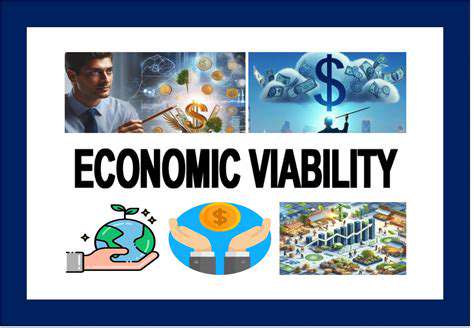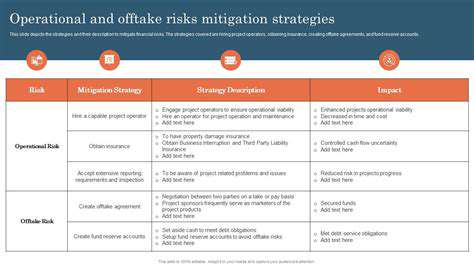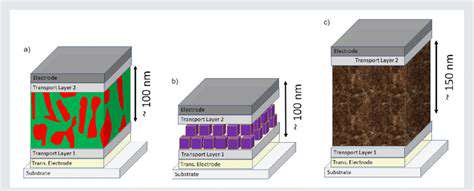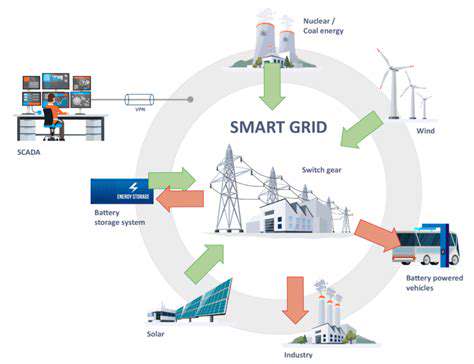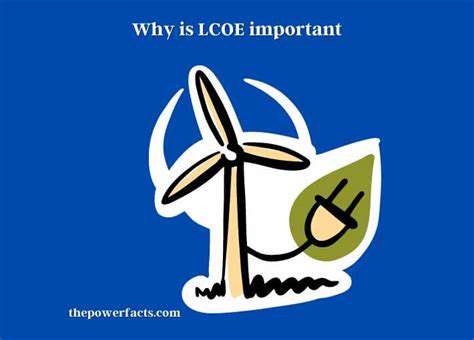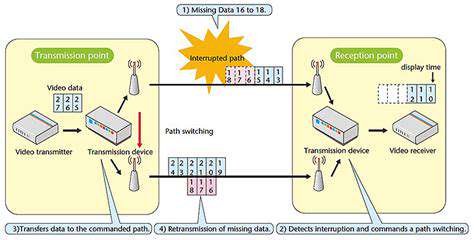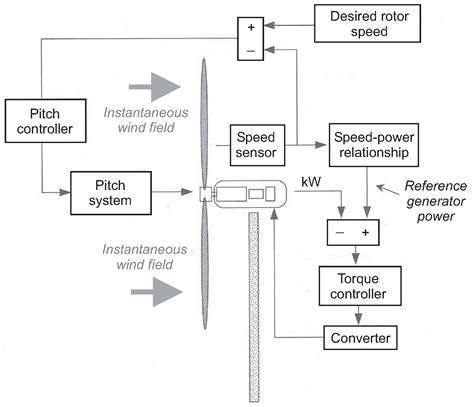Innovation Driven by Decentralization of Energy Generation
The decentralization of energy generation, often referred to as distributed energy resources (DERs), is a significant paradigm shift in the energy sector. Traditionally, energy generation was centralized, with large power plants supplying electricity to vast grids. Now, smaller, localized generation sources are proliferating, ranging from rooftop solar panels to community-scale wind turbines. This shift fundamentally alters how electricity is produced, stored, and managed, fostering a more resilient and sustainable energy future.
Economic Benefits of Decentralization
Distributed energy resources offer numerous economic advantages. By reducing reliance on centralized infrastructure, DERs can lower transmission and distribution losses. Furthermore, they can enable consumers to generate and sell excess energy back to the grid, potentially creating revenue streams and reducing their energy costs. This localized generation can also lower the overall cost of electricity, and make it more affordable for consumers, particularly in remote areas or underserved communities.
Technological Advancements Driving the Trend
The rise of DERs is inextricably linked to advancements in energy storage technology, particularly battery storage. Improved battery technology allows for more efficient and cost-effective storage of excess renewable energy, making DERs more viable. Smart grid technologies also play a crucial role, enabling better management and integration of distributed energy sources into the existing infrastructure. These technological advancements are making it easier and more attractive for individuals and businesses to adopt DERs.
Environmental Sustainability and Reduced Emissions
Distributed energy resources are closely aligned with environmental sustainability goals. By reducing reliance on large, centralized power plants, DERs contribute to a significant decrease in greenhouse gas emissions. Renewable energy sources, such as solar and wind, are often integrated into DER systems, further enhancing environmental benefits. This shift towards decentralized generation is a crucial step in mitigating climate change and fostering a more sustainable energy future.
Grid Modernization and Enhanced Reliability
The integration of DERs necessitates a modernization of the existing electricity grid. Smart grids, equipped with advanced sensors and communication systems, are essential for managing the fluctuating energy flows from distributed sources. This modernization leads to a more reliable and resilient grid, better equipped to handle the intermittent nature of renewable energy sources. This enhanced reliability is particularly crucial in areas prone to outages or experiencing high energy demand fluctuations.
Community Engagement and Local Energy Control
The decentralization of energy generation fosters greater community engagement and control over local energy resources. Residents and businesses can participate more actively in the energy production and consumption process. This level of local control can lead to greater energy independence and the development of more sustainable energy communities. Furthermore, localized energy control allows for more tailored solutions for specific community needs and priorities.
Future Implications for Energy Markets
The proliferation of distributed energy resources is poised to reshape energy markets significantly. Traditional utility models are being challenged by the emergence of peer-to-peer energy trading platforms and community energy cooperatives. These new models allow for a more dynamic and efficient allocation of energy resources, potentially leading to a more competitive and consumer-centric energy sector. This shift promises a more flexible and responsive energy system, better adapted to the needs of the future.
Innovation in Energy Storage and Management
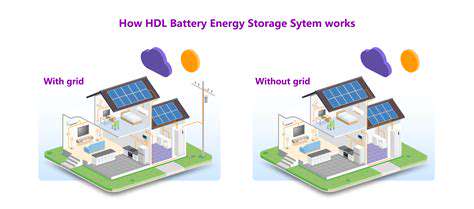
Advanced Battery Technologies
Lithium-ion batteries, while dominant in the market, face limitations in terms of energy density and lifespan. Researchers are actively exploring alternative chemistries, such as solid-state batteries, which promise higher energy storage capacity and improved safety. These advancements hold the key to powering electric vehicles and grid-scale energy storage systems with greater efficiency and reliability.
Solid-state batteries, in particular, are attracting significant attention due to their potential to overcome the safety concerns associated with flammable electrolytes in lithium-ion batteries. This innovative technology could revolutionize energy storage solutions, offering a safer and more efficient alternative for a wide range of applications.
Emerging Storage Materials
Beyond batteries, scientists are investigating novel materials for energy storage. This includes exploring materials like metal-air batteries and flow batteries, which offer the potential for significantly higher energy storage capacity compared to traditional technologies. These explorations are driven by the need for sustainable and scalable energy storage solutions.
Metal-air batteries, for example, potentially offer a much higher energy density compared to lithium-ion batteries, making them attractive for applications requiring substantial energy storage. However, challenges in material stability and cost-effectiveness remain significant hurdles that researchers are actively addressing.
Supercapacitors and Hybrid Systems
Supercapacitors are another promising energy storage technology, offering fast charging and discharging capabilities. This makes them suitable for applications requiring rapid energy delivery, such as electric vehicles and portable electronics.
Hybrid energy storage systems, combining batteries and supercapacitors, aim to leverage the strengths of both technologies. This approach can optimize performance for specific applications, maximizing energy density and power delivery capabilities.
Grid-Scale Energy Storage
The integration of renewable energy sources like solar and wind requires robust energy storage solutions for grid stabilization. Large-scale energy storage systems are crucial for maintaining grid reliability and stability during periods of fluctuating renewable energy generation.
These grid-scale solutions must be cost-effective and scalable to support the increasing demand for renewable energy integration. Innovative designs and technologies are being developed to meet the challenges of large-scale energy storage, ensuring a reliable and sustainable energy future.
Sustainable Manufacturing and Recycling
The environmental impact of energy storage technologies extends beyond the device itself. Sustainable manufacturing practices and efficient recycling processes are becoming increasingly important to minimize the environmental footprint of energy storage solutions.
Minimizing the use of rare earth elements and prioritizing recyclable materials are crucial steps toward environmentally responsible energy storage. Moreover, sustainable manufacturing processes can significantly reduce the overall environmental burden of energy storage technology.
Integration with Smart Grids
Smart grids are becoming essential for managing the complex interplay between renewable energy sources and energy storage systems. Integrating energy storage into smart grids allows for real-time optimization of energy flows and improved grid stability.
Smart grid technologies are critical for optimizing the use of energy storage systems and managing the fluctuating energy demands of a modern society. This integration is essential for a sustainable and reliable energy future.
The Impact on Sustainability and Economic Growth
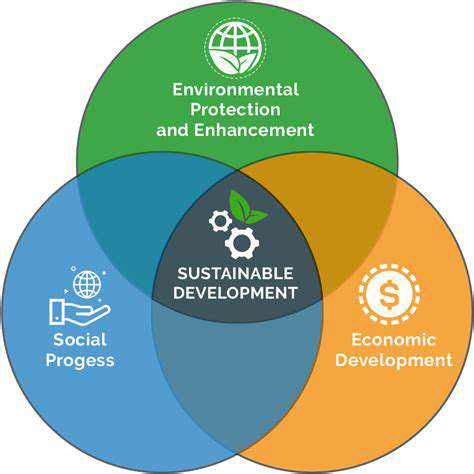
The Environmental Footprint of Consumption
Consumerism, in its current form, places a significant strain on the planet's resources. The relentless pursuit of new products, often with short lifecycles, generates enormous amounts of waste and pollution. This includes everything from packaging materials to electronic devices that end up in landfills or are improperly disposed of, contributing to environmental degradation.
The production processes behind many consumer goods are often unsustainable. They frequently involve resource depletion, water contamination, and greenhouse gas emissions, exacerbating climate change. A shift towards sustainable consumption patterns is crucial to mitigate these negative effects.
The Pressure on Natural Resources
The demands of a consumer-driven economy often lead to unsustainable exploitation of natural resources. Forests are cleared for agriculture and timber, impacting biodiversity and contributing to deforestation. The extraction of minerals and fossil fuels is often accompanied by environmental damage, and the depletion of resources is a growing concern.
The pressure on natural resources is immense, and a shift towards more sustainable practices is essential to ensure the long-term availability of these vital elements for future generations.
The Rise of Waste and Pollution
The sheer volume of waste generated by consumerism is staggering. From plastic bottles to discarded electronics, the accumulation of waste burdens landfills and pollutes ecosystems. This has a significant impact on wildlife and human health.
Waste management systems are struggling to keep up with the increasing amounts of waste. Improved waste reduction and recycling strategies are crucial to mitigate the impact of pollution on our environment.
The Role of Corporate Responsibility
Companies play a critical role in shaping sustainable consumption patterns. They can adopt more sustainable practices throughout their supply chains, reducing their environmental footprint and promoting ethical sourcing of materials. Transparency and accountability are crucial for fostering trust and encouraging responsible consumer choices.
Implementing sustainable business models is not only beneficial to the environment but can also enhance a company's reputation and brand image.
The Importance of Consumer Awareness
Consumers have a powerful role to play in driving change towards more sustainable consumption patterns. Educating themselves about the environmental impact of their choices, supporting eco-friendly products, and demanding greater transparency from businesses are vital steps.
By making conscious choices, consumers can collectively pressure companies to adopt more sustainable practices. Understanding the lifecycle of products and the environmental impact of different materials is key.
The Potential for Circular Economy Models
Circular economy models offer a promising pathway towards more sustainable consumption patterns. These models focus on reducing waste, reusing materials, and regenerating natural systems. This includes strategies like designing products for durability and repairability and implementing closed-loop systems for resource management.
Government Regulations and Incentives
Government policies can play a significant role in promoting sustainable consumption patterns. Implementing regulations that incentivize eco-friendly practices and discourage unsustainable consumption habits can drive positive change. This could include tax incentives for sustainable products and penalties for companies that engage in environmentally damaging practices.
Stronger regulations and supportive policies are necessary to create a more sustainable consumption environment. This can encourage businesses and consumers to adopt more environmentally friendly practices.
